Patch Roofing vs. Full Roof Replacement: When Is Patching Enough?
Patch roofing versus full replacement represents one of the most significant decisions homeowners face when roof problems develop. The cost difference between $500 patch repairs and $15,000 complete replacements creates powerful incentives to patch rather than replace. However, choosing poorly—patching when replacement makes sense or replacing when patches would suffice—wastes money and creates ongoing problems. Understanding when patch roofing provides adequate solutions and when full replacement proves necessary protects your investment while ensuring your home stays protected.
What Is Patch Roofing?
Patch roofing repairs isolated damage by replacing or repairing small roof sections rather than entire roofing systems. Patches address specific problems—missing shingles from storms, localized leak areas, damaged flashing, or small sections with deteriorated materials. Quality patches integrate new materials with existing roofing, restoring weatherproofing without the expense and disruption of complete replacement.
Successful patches require matching materials, proper installation techniques, and realistic expectations about longevity. Patched areas typically last 3-10 years depending on remaining roof condition and patch quality. Patches work best as temporary solutions extending roof life until planned replacement or as permanent repairs on otherwise healthy roofs with isolated damage. Understanding roof repair fundamentals helps homeowners recognize when patching makes sense versus when it delays inevitable replacement.
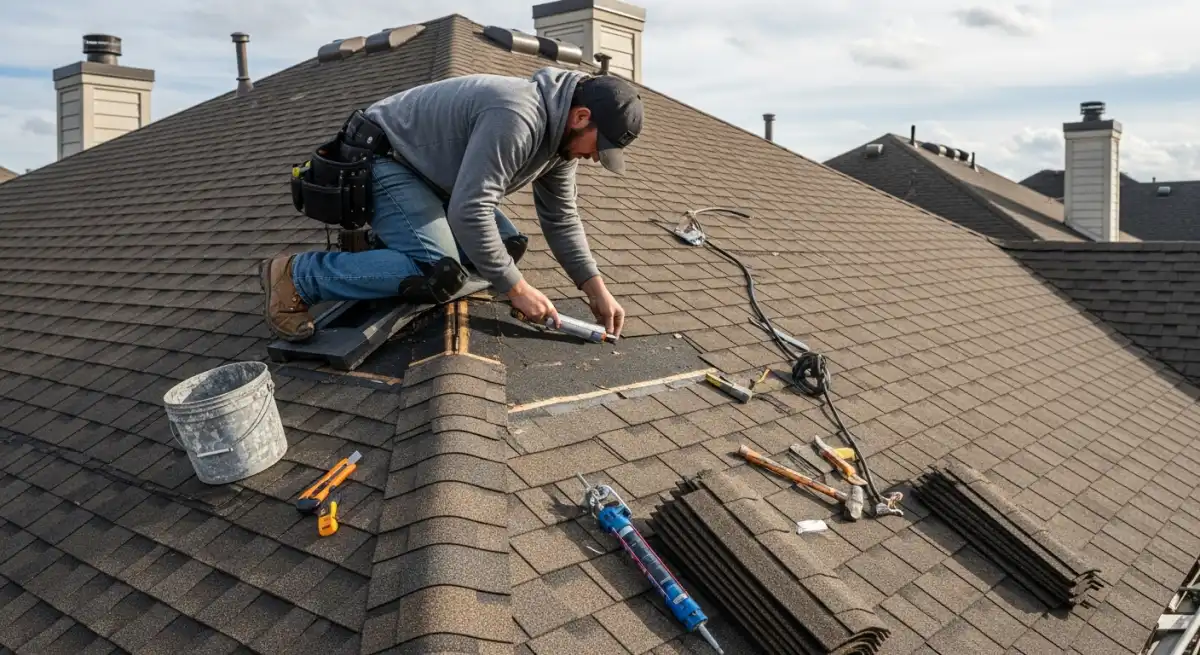
When Patch Roofing Makes Sense
Patch roofing works excellently when damage affects less than 10-15% of total roof area and surrounding materials remain in good condition. Storm damage creating isolated problems on otherwise healthy roofs qualifies as ideal patching candidates. Fallen tree branches, localized hail damage, or wind-blown shingle loss on newer roofs make economic sense to patch rather than replace entirely.
Roofs under 10 years old with isolated problems benefit from patching since most of the roof retains significant useful life. Budget constraints sometimes force choosing between patching now or delaying replacement several years—in these cases, quality patches provide adequate protection while you save for eventual replacement. Patching also makes sense when selling homes within 1-3 years; buyers appreciate recent repairs addressing visible problems without requiring sellers to invest in full replacements they won't benefit from.
When Full Replacement Is Necessary
Replace rather than patch when roofs approach or exceed their expected lifespan—typically 15-25 years for asphalt shingles. Age-related deterioration affects entire roofing systems, making patches temporary Band-Aids on fundamentally worn-out roofs. Multiple leak areas indicate systemic problems that patching cannot address. Widespread granule loss, curling shingles, or brittleness signal end-of-life conditions requiring complete replacement.
Replace when damage exceeds 25-30% of roof area. At this threshold, patch costs approach replacement costs while delivering far less value. Severe storm damage often falls into this category—insurance adjusters frequently determine total loss when damage exceeds certain percentages. Underlying deck damage discovered during inspections demands replacement since patches don't address structural problems beneath roofing materials. These situations parallel decisions between repairing versus replacing worn roofing systems.
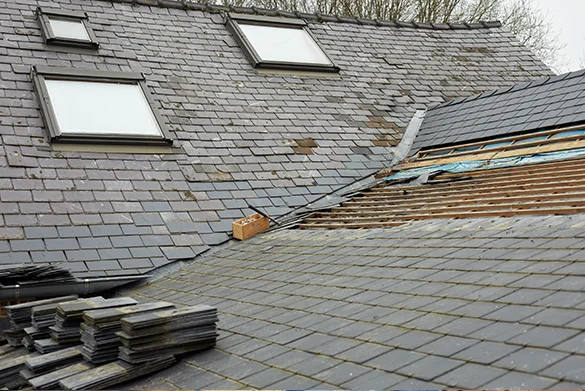
Cost Comparison: Patching vs. Replacement
Patch roofing costs vary dramatically based on damage extent and accessibility. Small repairs addressing 10-20 square feet run $300-800 including labor and materials. Medium patches covering 50-100 square feet cost $800-2,000. Large patch projects approaching 200+ square feet reach $2,000-5,000 depending on complexity, material matching challenges, and roof pitch.
Full roof replacement costs $5,000-15,000 for typical Northern Virginia homes, with average projects around $8,000-12,000. This dramatic cost difference drives homeowners toward patching even when replacement makes better long-term sense. However, total lifecycle costs often favor replacement. A roof requiring $1,500 in patches every 2-3 years for 10 years costs $5,000-7,500 total while providing inferior protection compared to one-time replacement delivering 20+ years of worry-free performance.
Evaluating Your Roof's Condition
Accurate condition assessment determines whether patching makes sense. Professional inspections identify not just visible damage but underlying problems that influence repair-versus-replace decisions. Inspectors check shingle condition across the entire roof, probe deck integrity, assess ventilation adequacy, and evaluate flashing systems. This comprehensive evaluation costs $200-500 but provides decision-making information worth far more.
Key factors include remaining shingle lifespan, extent of granule loss, number and distribution of damaged areas, deck condition, and previous repair history. Roofs with multiple previous patches often indicate systemic problems better addressed through replacement. Those with isolated damage on otherwise excellent materials make strong patching candidates. Honest professional assessments help homeowners understand true conditions rather than relying on guesswork or biased contractor opinions pushing their preferred solutions. Getting multiple expert opinions provides balanced perspectives on best approaches.
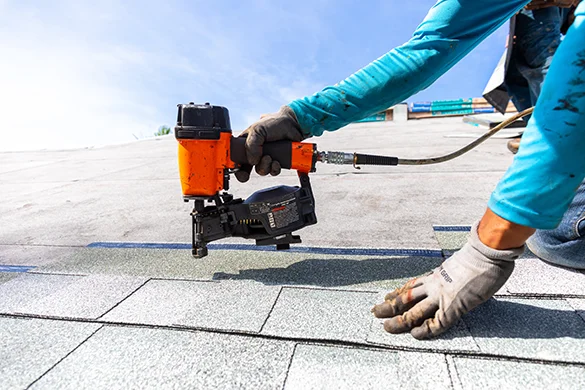
Quality Patch Installation Requirements
Successful patch roofing demands more than simply replacing damaged shingles. Proper patches extend beyond obvious damage areas, removing shingles around damage to ensure complete leak elimination. Experienced contractors inspect and replace damaged underlayment, not just surface materials. They address any deck rot or damage discovered when removing old materials.
Material matching poses significant challenges for patches on older roofs. Shingle colors fade over years, making new materials noticeably different even when technically identical. Discontinued products force using closest available matches that may not integrate seamlessly. Quality contractors set realistic expectations about appearance differences and explain options like replacing entire visible roof planes to maintain uniform appearance. These installation considerations apply similarly when making material upgrades or major repairs.
Insurance Considerations
Insurance coverage significantly impacts patch-versus-replace decisions. Storm damage often qualifies for insurance coverage that may pay for complete replacement when damage exceeds policy thresholds. Many policies cover "matching" costs when patching materials don't match existing roofs, potentially funding larger repairs or full replacement to maintain appearance.
However, insurance companies sometimes pressure homeowners toward patches rather than replacement to minimize claim costs. Understand your policy's actual coverage and replacement cost provisions. Consider hiring public adjusters or getting independent assessments when claim amounts seem inadequate. Document all damage thoroughly with photos and professional inspection reports. Insurance decisions shouldn't override structural necessities—accepting insufficient settlements that fund patches when replacement proves necessary creates future problems insurance won't cover. Similar insurance complexities affect major roofing projects throughout the region.
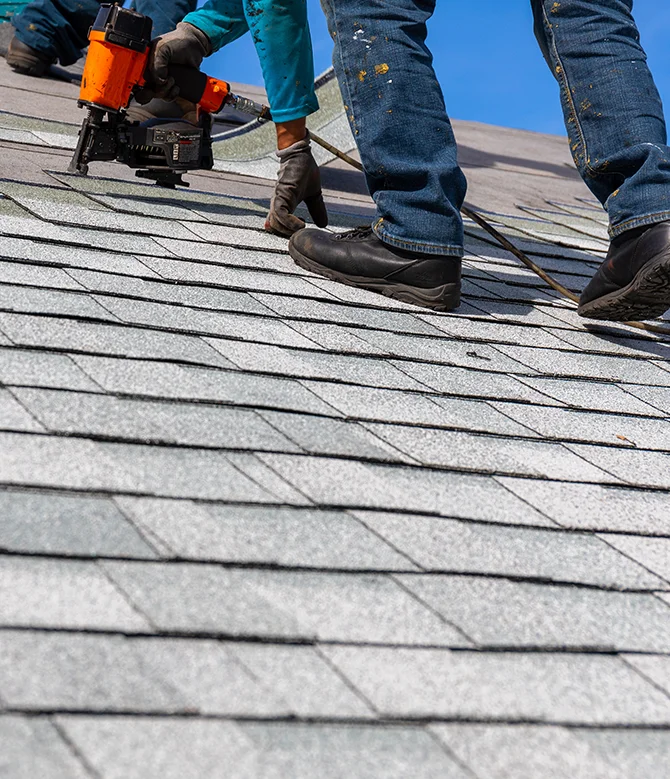
Long-Term Planning Considerations
Homeownership timeline influences repair-versus-replace decisions significantly. If you plan to sell within 1-3 years, quality patches addressing visible problems may provide adequate solutions without investing in full replacements benefiting buyers rather than you. However, disclose all repairs to buyers and provide documentation—undisclosed problems create legal liability.
Homeowners planning 5+ years in their homes should consider total lifecycle costs rather than just immediate expenses. Replacement costs spread over 20-25 years often prove cheaper annually than recurring patch costs over the same period. Replacement eliminates worry about recurring leaks and provides warranty protection patches rarely offer. New roofs also increase home values and marketability when you do eventually sell, potentially recouping significant portions of replacement costs.
Multiple Small Leaks: Patch or Replace?
Multiple leak locations pose particular challenges for patch-versus-replace decisions. Some contractors recommend patching each area individually, while others advocate replacement. The correct answer depends on leak distribution, roof age, and overall condition. Leaks clustered in one area suggest localized problems addressable through patches. Scattered leaks across entire roofs indicate systemic deterioration requiring replacement.
Consider the "three-leak rule"—when you discover three or more leak locations, thoroughly inspect the entire roof rather than just addressing visible problems. Hidden leaks often accompany visible ones, meaning patch costs multiply as you discover additional problems. Professional inspections using moisture meters and infrared cameras identify all compromised areas, enabling accurate cost comparisons between comprehensive patching and complete replacement. This thorough approach mirrors best practices for addressing complex leak scenarios.
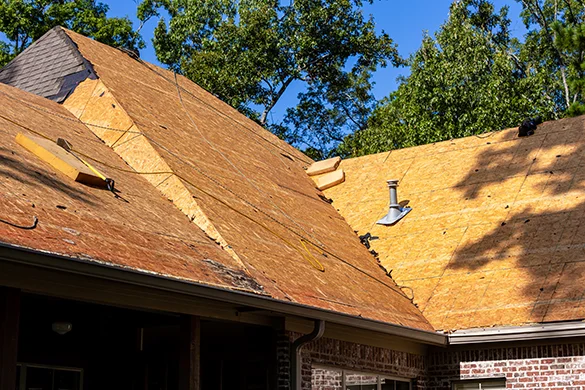
Partial Roof Replacement Options
Partial replacement represents middle ground between patches and full replacement. This approach replaces entire roof sections—one slope, a badly damaged plane, or specific areas with concentrated problems. Partial replacement costs 40-60% of full replacement while addressing significant damage patches cannot fix adequately.
Partial replacement works best when damage concentrates on specific roof planes—the south-facing slope receiving maximum sun exposure, for example, often deteriorates faster than shaded northern slopes. This option makes sense for homes with complex roof designs where only certain sections show problems. However, material matching challenges and remaining roof longevity concerns require careful consideration. Partial replacement provides 5-15 more years of service versus 20-25 from complete replacement, affecting long-term cost-effectiveness.
Getting Honest Contractor Opinions
Contractor bias significantly affects patch-versus-replace recommendations. Some contractors prefer lucrative replacement projects over smaller patch jobs, steering homeowners toward replacement regardless of true necessity. Others lack replacement expertise or insurance required for major projects, pushing patches even when replacement makes better sense. Finding honest, unbiased advice requires careful contractor selection.
Seek contractors offering both repair and replacement services who earn your trust through transparent communication rather than high-pressure sales tactics. Request detailed explanations of their recommendations including specific conditions justifying their advice. Get multiple opinions from different contractors, comparing their assessments and recommendations. Significant discrepancies between opinions warrant additional independent inspections. Professional contractors prioritize your best interests, recommending patches when appropriate and replacement when necessary, regardless of which generates more revenue. Look for this integrity when selecting roofing professionals for any major decisions.

DIY Patching: When It Works and When It Doesn't
Small, accessible patches tempt DIY-inclined homeowners seeking cost savings. Replacing a few missing shingles on low-pitch, easily accessible roofs falls within many homeowners' capabilities. However, most patch projects exceed DIY skill levels. Identifying all damage requiring repair, properly integrating new materials with old, and ensuring complete waterproofing demand experience most homeowners lack.
DIY patches often create more problems than they solve. Improper installation causes new leaks. Inadequate damage assessment leaves problems unaddressed. Safety risks on steep or high roofs lead to serious injuries. Failed DIY patches require professional correction costing more than proper repairs would have initially. Most homeowners benefit from professional patch services providing expertise, safety, and warranties that DIY work cannot match.
Making Your Decision
Choosing between patch roofing and full replacement requires honest assessment of your roof's condition, realistic evaluation of costs versus benefits, and consideration of your long-term plans. Patches work excellently for isolated damage on otherwise healthy roofs, storm damage on newer installations, and temporary solutions when budgets prevent immediate replacement. Replacement makes sense for aging roofs, widespread deterioration, multiple problem areas, and long-term homeownership.
Don't let short-term cost savings override long-term value considerations. Calculate total costs over expected timeframes rather than just immediate expenses. Consider peace of mind, warranty coverage, and home value impacts alongside direct costs. For expert guidance on patch roofing versus replacement decisions in Northern Virginia, contact Reston Roof at (571) 453-6515. Our experienced team provides honest assessments, detailed cost comparisons, and quality solutions whether patching or replacing your roof.
